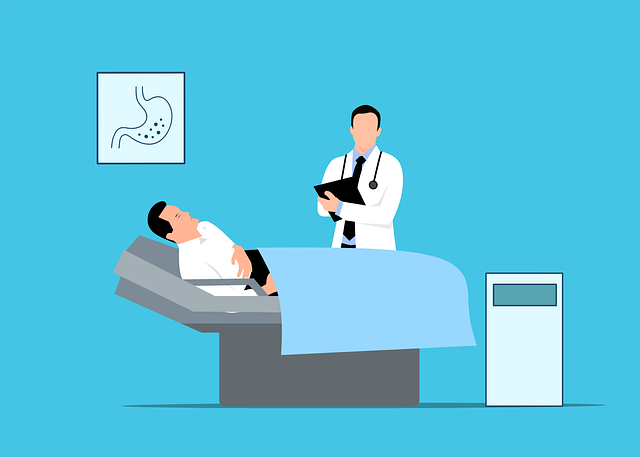Many people with chronic pain rely on medications like NSAIDs and opioids for symptom relief, but these don't address root causes. Traditional approaches struggle to differentiate between different types of pain. Regenerative pain management offers a promising alternative by focusing on healing and regenerating damaged tissues using techniques like stem cell therapy and platelet-rich plasma (PRP). These non-invasive treatments stimulate the body's natural healing mechanisms, providing long-lasting pain relief and effective chronic pain management without heavy medication reliance. By tapping into tissue regeneration, these advanced therapies offer holistic and sustainable solutions for natural pain relief.
In today’s digital era, many rely on medications for chronic pain management, but these conventional methods come with limitations and potential side effects. It’s time to explore alternative solutions: regenerative pain management and recovery through regenerative medicine. This article delves into innovative approaches like non-invasive pain treatments and the science behind tissue regeneration, offering a new paradigm for achieving lasting pain relief therapies and advanced pain management. Discover how these cutting-edge methods provide natural pain relief and regenerative recovery solutions for those seeking effective, holistic chronic pain management.
- Understanding the Limitations of Conventional Medications for Pain Management
- Exploring Regenerative Recovery Methods: A New Paradigm for Chronic Pain
- Non-Invasive Pain Treatments: Unlocking Natural Healing Processes
- The Science Behind Tissue Regeneration and Its Role in Chronic Pain Relief
- Integrating Regenerative Medicine into Comprehensive Pain Management Strategies
Understanding the Limitations of Conventional Medications for Pain Management

Many individuals living with chronic pain have come to rely heavily on medications as a primary solution for symptom relief. While conventional pharmaceuticals can provide immediate and effective pain management, they often come with a range of limitations and potential side effects. These drugs, typically classified as non-steroidal anti-inflammatory drugs (NSAIDs) or opioids, offer temporary relief but do not address the underlying causes of pain. Over time, this reliance on medications can lead to increased tolerance, requiring higher doses for the same effect, and may even result in dependency.
The limitations of conventional pain management become more evident when exploring the complex nature of pain itself. Chronic pain, especially when stemming from injuries, illnesses, or age-related conditions, involves intricate interactions between nerves, muscles, and tissues. Traditional medications often fail to distinguish between acute inflammatory pain and chronic neuropathic pain, leading to less than optimal outcomes. Regenerative pain management and recovery through advanced therapies, such as regenerative medicine, offer a promising alternative by focusing on tissue regeneration and repairing the body’s natural healing processes rather than solely masking symptoms with synthetic drugs.
Exploring Regenerative Recovery Methods: A New Paradigm for Chronic Pain

Exploring Regenerative Recovery Methods offers a promising new paradigm for managing chronic pain. Traditional approaches often rely heavily on medications to mask symptoms, but regenerative pain management techniques aim to heal and regenerate damaged tissues, providing long-lasting relief. These advanced pain management strategies utilize natural pain relief methods, such as stem cell therapy, platelet-rich plasma (PRP), and other biologic treatments, to stimulate the body’s inherent healing mechanisms.
By focusing on recovery through regenerative medicine, individuals can potentially reduce their reliance on medications. Non-invasive pain treatments like these offer a more holistic approach to chronic pain management. They target not just the symptoms but also the underlying causes of pain, promoting tissue regeneration and restoring function. This shift towards regenerative recovery solutions could revolutionize how we address chronic pain, providing patients with effective alternatives that enhance quality of life without the side effects often associated with long-term medication use.
Non-Invasive Pain Treatments: Unlocking Natural Healing Processes

Non-Invasive Pain Treatments: Unlocking Natural Healing Processes
In the realm of regenerative pain management, non-invasive pain treatments are gaining prominence as effective alternatives to conventional medication. These therapies focus on stimulating the body’s inherent ability to heal itself, offering a more holistic approach to chronic pain management. Advanced pain management techniques, such as regenerative recovery solutions, harness the power of tissue regeneration and natural pain relief mechanisms. By targeting specific areas without invasive procedures, these treatments provide lasting relief for conditions that once relied heavily on medications.
Pain relief therapies like platelet-rich plasma (PRP) therapy and stem cell therapy exemplify the potential of non-invasive pain treatments. PRP utilizes a patient’s own blood to accelerate healing and reduce inflammation, offering a safe and effective solution for various musculoskeletal disorders. Similarly, stem cell therapy encourages tissue regeneration, making it a promising regenerative recovery solution for chronic conditions. These innovative approaches not only alleviate symptoms but also address the root causes of pain, marking a significant shift towards sustainable chronic pain management.
The Science Behind Tissue Regeneration and Its Role in Chronic Pain Relief

The science behind tissue regeneration focuses on harnessing the body’s inherent ability to heal and repair itself. This process involves stimulating cellular activity and promoting the growth of new, healthy tissues to replace damaged or diseased ones. In the context of chronic pain management, regenerative medicine offers promising solutions. By targeting the source of inflammation and tissue degradation, these therapies aim to provide long-lasting pain relief without relying heavily on medications.
Regenerative pain management approaches, such as platelet-rich plasma (PRP) therapy and stem cell treatments, are gaining traction in advanced pain management. These non-invasive pain treatments encourage the body’s natural healing response, accelerating recovery through regenerative medicine. By promoting tissue regeneration, these methods address not just the symptoms but also the underlying causes of chronic pain, offering a more holistic and sustainable solution for patients seeking natural pain relief alternatives.
Integrating Regenerative Medicine into Comprehensive Pain Management Strategies

Integrating Regenerative Medicine into Comprehensive Pain Management Strategies offers a promising alternative to heavily rely on medications. By harnessing the body’s natural healing capabilities through techniques such as platelet-rich plasma (PRP) and stem cell therapy, regenerative pain management targets the root cause of pain rather than merely masking symptoms. This approach promotes recovery through regenerative medicine, providing long-lasting relief from chronic pain conditions that often resist traditional treatments.
Non-invasive pain treatments like these offer a more holistic approach to advanced pain management. Unlike highly invasive procedures or extensive medication regimens, regenerative recovery solutions stimulate the body’s natural tissue regeneration processes. This not only delivers effective pain relief but also fosters overall well-being by addressing the underlying causes contributing to chronic pain.
In conclusion, transitioning from conventional medications to regenerative pain management offers a promising paradigm shift in chronic pain relief. By exploring non-invasive pain treatments and harnessing the power of tissue regeneration, individuals can discover sustainable recovery solutions. Integrating regenerative medicine into comprehensive pain management strategies enables folks to reduce their reliance on medications while fostering natural healing processes, ultimately revolutionizing their journey towards advanced pain management.
